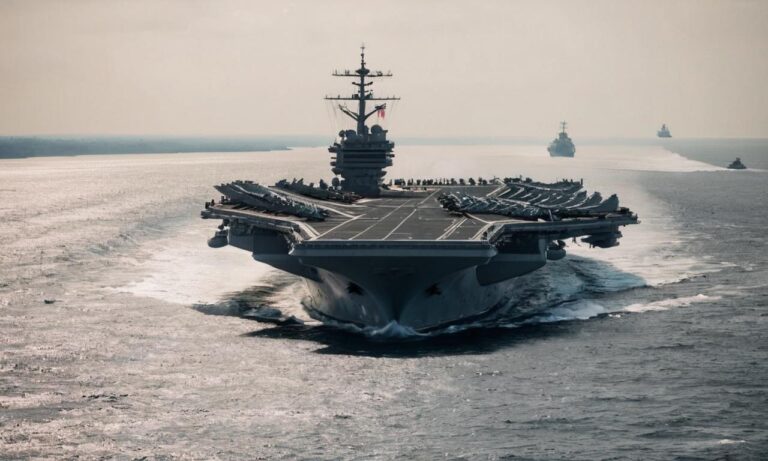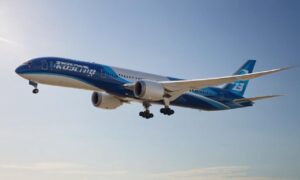When it comes to naval prowess and the projection of power across the seas, aircraft carriers stand out as the crown jewels of a nation’s maritime fleet. These colossal vessels serve as mobile airbases, capable of launching and recovering a variety of aircraft, from fighter jets to helicopters. But just how big is the biggest aircraft carrier, and what sets it apart in terms of size and capabilities?
The Scale of Supercarriers
Modern supercarriers are engineering marvels, designed to accommodate not only an impressive array of aircraft but also thousands of personnel. The title of the biggest aircraft carrier is often attributed to the United States Navy’s Gerald R. Ford-class carriers.
Gerald R. Ford-Class Dimensions
Measuring in at over 1,100 feet in length, the USS Gerald R. Ford (CVN 78), the lead ship of its class, is the largest aircraft carrier ever built. With a beam (width) of more than 130 feet and a displacement of around 100,000 tons, these carriers are true giants of the seas.
Not Just Size, but Capability
Size alone doesn’t tell the full story of the biggest aircraft carrier. These behemoths are equipped with state-of-the-art technology and capabilities that make them formidable assets on the global stage.
Advanced Technologies
The Gerald R. Ford-class carriers incorporate advanced technologies such as electromagnetic aircraft launch systems (EMALS) and advanced arresting gear (AAG), replacing traditional steam catapults and arresting cables. These innovations enhance the efficiency and flexibility of flight operations.
Enhanced Power and Sustainability
With nuclear propulsion systems, these carriers can operate continuously for decades without needing to refuel. This significantly extends their range and operational capabilities, allowing them to project power globally.
Global Impact and Strategic Importance
As symbols of a nation’s naval strength, the biggest aircraft carriers play a crucial role in shaping geopolitical dynamics. They are often deployed to strategic locations, serving as mobile bases that can rapidly respond to emerging threats or provide humanitarian assistance.
Strategic Deployment
Carriers like the USS Gerald R. Ford are capable of carrying a diverse air wing, including fighter jets, reconnaissance aircraft, and airborne early warning planes. This versatility allows them to adapt to a wide range of missions, from air superiority and power projection to intelligence gathering.
Force Projection and Deterrence
The sheer size and capabilities of the largest carriers make them powerful tools of deterrence. The ability to project airpower across vast distances serves as a clear message to potential adversaries and reinforces a nation’s strategic influence.
In conclusion, the question of how big the biggest aircraft carrier is goes beyond mere dimensions. The largest carriers, exemplified by the Gerald R. Ford class, represent the pinnacle of naval engineering, combining size, technological innovation, and strategic importance. As geopolitical landscapes continue to evolve, these floating airbases will undoubtedly play a central role in shaping the future of naval warfare and global security.
Delving into the world of naval aviation reveals not only the size of the biggest aircraft carriers but also the remarkable engineering feats that define them. These floating airbases are not just about sheer dimensions; they embody cutting-edge technologies and innovative design.
Innovative Design Concepts
Beyond their colossal size, aircraft carriers employ innovative design concepts for optimal functionality. From flight deck arrangements to hangar configurations, every aspect is meticulously planned to enhance operational efficiency and accommodate diverse aircraft types.
The Heart of Operations: Carrier Crew
While the focus often rests on the carriers themselves, it’s crucial to recognize the vital role played by the dedicated men and women comprising the carrier’s crew. The synergy between human expertise and technological prowess ensures the seamless execution of complex operations on these floating cities.
The crew of an aircraft carrier operates as a well-coordinated team, managing everything from flight operations to maintenance and logistics. Their expertise and adaptability are integral to the carrier’s mission success and contribute significantly to its strategic impact.
| Carrier Component | Function |
|---|---|
| Flight Deck | Launch and recovery of aircraft |
| Hangar Bay | Storage and maintenance of aircraft |
| Bridge | Command and control of carrier operations |
Frequently Asked Questions
As we explore the realm of the biggest aircraft carriers, certain questions frequently arise. Here are some common queries about these maritime giants:
- Q: How many aircraft can a carrier like the USS Gerald R. Ford accommodate?
- A: The USS Gerald R. Ford-class carriers can carry a diverse air wing, including a mix of fighter jets, reconnaissance aircraft, and airborne early warning planes, totaling around 75-80 aircraft.
- Q: What is the significance of electromagnetic aircraft launch systems (EMALS) on carriers?
- A: EMALS provides smoother and more precise acceleration for aircraft during takeoff, improving overall operational efficiency and reducing stress on both the aircraft and the carrier’s structure.
While the size and capabilities of the biggest aircraft carriers are awe-inspiring, their technological prowess extends below the waterline. Subsurface technologies contribute significantly to the carriers’ survivability and operational effectiveness.
Underwater Innovations
From advanced sonar systems to propulsion innovations, submarines and submersibles associated with aircraft carriers employ state-of-the-art technologies. These underwater assets enhance the carrier’s situational awareness and contribute to a comprehensive maritime defense strategy.






